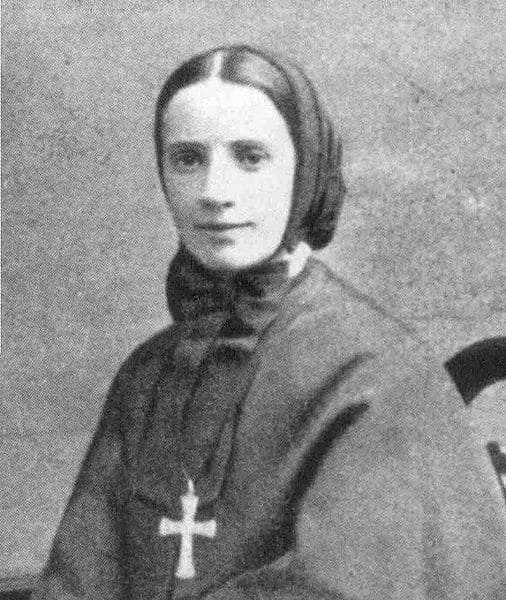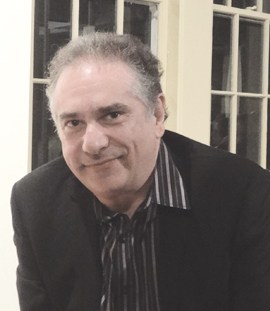1. Cabrini’s original name was Maria Francesca Cabrini, before she took her vows in 1877 and changed her name to Frances Xavier, in tribute to Francis Xavier.
2. Before becoming a nun, Cabrini was a teacher. She, herself, was taught by the Daughters of the Sacred Heart and had earned a teaching certificate with them in 1868. She was a private school teacher in her hometown of S’ant Angelo Lodigiano, Italy, and later was a public-school substitute teacher in Vidardo, from 1871 to 1874.
3. She had aquaphobia. Cabrini nearly drowned as a child, which spurred her fear of water. However, she overcame it as an adult when she made 23 transatlantic trips to do missionary work around the world.
4. She created her own missionary because of previous rejections. Due to her frail health, Cabrini wasn’t allowed to join any of the local missionaries – including the Daughters of the Sacred Heart, who had taught her growing up. She was encouraged, instead, to found her own religious congregation. Cabrini founded the Institute of the Missionary Sisters of the Sacred Heart of Jesus at the age of 30, in 1880, with seven other young women in Lodi, Italy.
5. America wasn’t even on Cabrini’s radar. Pope Leo XIII told Cabrini to go “not to the East, but to the West” – to New York for her missionary trip, instead of China as she had requested.
6. She and her Sisters had no home when landing in New York in 1889. After 12 days spent crossing the Atlantic Ocean from Italy, the pre-arranged housing accommodations and monetary stipend for Cabrini’s order weren’t ready upon their arrival. New York Archbishop Michael Corrigan suggested that they return to Italy instead. The American Sisters of Charity gave them hospitality, and the Italian Countess of Cesnola later donated property near 59th Street to them, which became their home and later the site of the order’s orphanage (opened on Palm Sunday of 1890).
7. Cabrini was a smart businesswoman, who paid close attention to the construction details of each institution she founded. According to TIME Magazine, she fired a group of contractors who tried to swindle her in a Chicago hospital construction project – “the little Italian nun fired them out of hand, tucked up her habit, and stumped about the scaffoldings for weeks directing the laborers herself,” the report said.
8. She established 67 institutions – one for each year of her life. Her orphanages, hospitals and schools are located throughout the United States (e.g. Chicago, New Orleans and Denver) and around the world (e.g. Argentina, Spain and France).
9. Cabrini has four miracles to her name. In 1928, Chicago Cardinal George Mundelein verified two miracles that were attributed to her. In 1939, two more miracles were attributed to her intercession, which helped her to become canonized as a saint. One miracle, for example, was the restoration of Fr. Peter Smith’s eye tissue and sight, hours after he was born and was mistakenly given the wrong percentage of silver nitrate in 1921. The Sisters at Mother Cabrini Memorial Hospital pinned a piece of Cabrini’s habit to Peter’s onesie and prayed for him for two days before he recovered.
10. She became the first U.S. citizen to be canonized a saint on July 7, 1946. According to the New York Daily News, Pope Pius XII waived the canon law that “required a half-century lapse between the first examination of the candidate’s virtues and actual elevation to sainthood.
11. Cabrini died in her own Columbus Hospital (Chicago) of dysentery on December 22, 1917.
Top photo a portrait of Frances Cabrini Xavier
Author
-

George Fiala has worked in radio, newspapers and direct marketing his whole life, except for when he was a vendor at Shea Stadium, pizza and cheesesteak maker in Lancaster, PA, and an occasional comic book dealer. He studied English and drinking in college, international relations at the New School, and in his spare time plays drums and fixes pinball machines.
View all posts
George Fiala has worked in radio, newspapers and direct marketing his whole life, except for when he was a vendor at Shea Stadium, pizza and cheesesteak maker in Lancaster, PA, and an occasional comic book dealer. He studied English and drinking in college, international relations at the New School, and in his spare time plays drums and fixes pinball machines.
Discover more from Red Hook Star-Revue
Subscribe to get the latest posts sent to your email.











